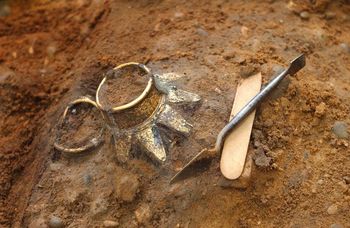Data treatment
There are many data processing functions available to the archaeological geophysicist (see for example Clark (1996: 150), Scollar et al. (1990: 488), Gaffney & Gater (2003), Aspinall et al. (2008)). It should be borne in mind that processing may remove the signature of archaeological features (e.g. linear features parallel to the survey direction may be lost when destriping the data) or introduce artefacts specific to the processing functions (e.g. the introduction of negative halos when applying high-pass filters (Clark 1996: 151)). It is important to give as much detail about the processing ‘history’ of a data set for later interpretation. Fortunately, most specialised software packages allow inspection of the history of the processing steps. Such a history, together with information on the computer program used and its version often proves helpful in assessing the alterations that were made to the original data. If details of the processing functions are known, or uncommon software has been used, it is advisable to give more detailed descriptions of the processing or refer to relevant publications. The information on the processing can be provided in a tabular format suitable to the applied tasks (indicated as the field Data processing) or as a brief description in a text document. It may be helpful to explain why the individual processing steps were performed and what improvements they brought about.



